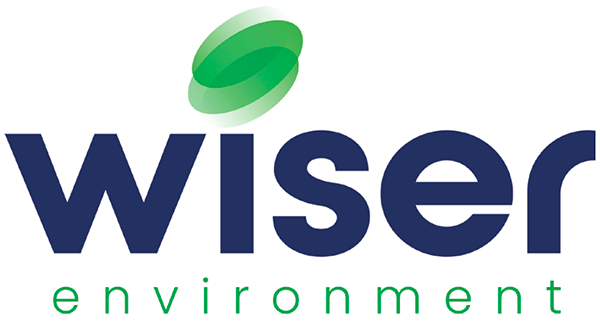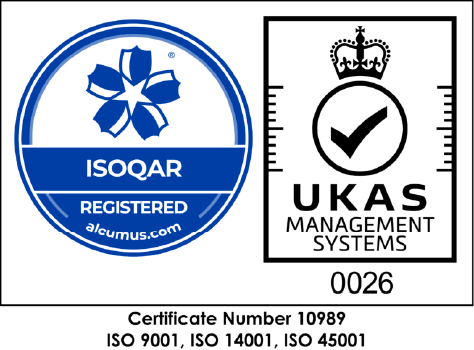The Environment Agency has published new draft standards for sites which treat metal wastes. These standards will impact a metal waste site’s power to operate. To untangle the complex guidelines, the team at Wiser explains where the new waste controls will apply.
An online survey on the draft guidance – titled ‘Metal Shredders: Appropriate Measures for Permitted Facilities’ – is live until 08/02/21. Wiser urges those who are affected by these draft standards to review them and to respond to the EA. For those who would like to respond anonymously, contact the team at Wiser and take part in our joint response.
Guidelines for waste metal shredders
Alongside other waste activities – for instance, biological treatment of waste – the EA has published new draft standards for sites who mechanically treat metal waste in shredders. Importantly, the EA’s expectations come as an extension to BAT (Best Available Technique).
In turn, this sets the baseline for scrap metal dealers to meet in order to comply with their environmental legislation. Such as standard rules permits, bespoke waste operations or installations. As a result, these guidelines will have an impact on all who work within the metal sector.
Waste metal dealers should expect change
As a mature industry, scrap metal dealers undertake many different activities. To add clarity, the EA spells out the following actions as examples of mechanical treatment of waste metal in shredders. To put it another way – if your waste site shreds scrap metal, then these standards directly apply to you
Activities defined as examples of mechanical treatment of waste metal in shredders
- Hammermills – a steel drum which shreds or crushes metal into smaller pieces through repeated blows of free-swinging hammers.
- Chain mills – a set of chains attached to a high-speed motor that can crush or grind waste metal.
- Rotary shears – a circular blade that can produce curved or straight cuts in metal.
- Other similar equipment – that re-sizes metal into smaller fragments or separates metallic and non-metallic fractions.
If your waste site screds scrap metal, then these standards directly apply to you.
Room to wiggle
As warming news to waste sites who cut metal, Wiser understands that the EA will listen to suggestions for alternative measures. But even so, you would need to show evidence that those non-standard suggestions still protect the environment. On top of that, you would also need to show why the EA’s standard does not fit with your site. In practice, this has proven difficult once guidance is set. Hence, Wiser recommends that those companies impacted review and respond to the consultation.
Applicable to both new & existing sites
As the draft guidance intends to sit atop of BAT, it will impact both new and existing sites. Regarding new sites, the EA expects these standards to be in place and approved prior to the site becoming operational. Whereas, existing scrap processors have the option to bring in these new standards within a reasonable timeframe.
Here, the EA intends to assess and match a waste metal site’s workings against their draft guidance. Then, as an outcome, manage the site locally through a schedule of compliance. In other words, your local area officer will manage your timescale for implementing necessary changes.
As stated in this draft, the EA has organised changes into ‘standard requirements’ and ‘capital intensive’. Deemed as a low cost to install, standard requirements should occur as soon as possible or within 12 months. The EA lists updating a working plan, bringing in measures to prevent fugitive emission or improving waste handling techniques as examples of ‘standard requirements’.
In contrast, larger and pricey changes have been given a grace period of 3 years. The EA label these changes as ‘capital intensive’. Whilst this flexible stance suits most existing sites, those with nearby sensitive receptors may need to take more urgent action. A sensitive receptor is an area where extra care must be taken. For instance, hospitals or schools.
Examples of costly changes include installation of abatement equipment, investing in pre-shredding machinery or redesigning the site’s layout. Above all, the measures listed in this article are not exhaustive. As a result, Wiser suggests that metal processors get in touch for bespoke support.
Integrated management system
As part of the environmental permitting requirements, the EA’s standard calls for sites to work to a written working plan – also known as an integrated management system (IMS). An IMS outlines the procedures a facility works towards. These procedures should seek to reduce the risk of operations causing harm to the environment. Extending the system further, the guidance insists that operators update their IMS to include the following:
IMS improvements
- Commitment from management
Senior roles at a site should read, review and sign off their IMS. The EA intends to use this sign off as proof that the IMS correctly reflects the site. - Environmental policy
The EA want to see sites reduce their impact on the environment. A written environmental policy shows that a site is committed to a better and cleaner future. Wiser suggests that such a policy should include environmental objectives, targets and future investment. - Improve environmental performance
As above, sites should work towards reducing their environmental impact. Side by side with an environmental policy, the EA expect sites to carry out environment-friendly procedures. Actions could include staff training, quality control, reporting, maintenance timetabling and emergency preparedness. - Operate with competent management
Site managers should hold suitable qualifications. This will prove that they fit the managerial role. For most sites, competence is achieved through a WAMITAB MROC1 course. - Check environmental performance
Sites should learn from their incidents, mistakes and near misses. By using their IMS, sites should record all risky events. Overtime learning and avoiding future incidents. - Development of cleaner technologies
Take steps to renew and improve the site’s equipment and machinery. For example, update the worker’s tools so they can reduce waste and create less pollution. - Sectoral benchmarking
Here the EA want sites to compare themselves the industry’s standard and sector guidance. This action will highlight areas where the site can improve. - Maintain supporting documentation
These documents include a climate change risk assessment, residues management plan, accident management plan, site condition report and fire prevention plan.
In sum, the EA’s IMS targets are broad. Scrap metal sites could need further support to bring their plans up to date. The team at Wiser can help. Contact us to draft and align your site’s written working plan.
Waste acceptance and handling
Designed to limit emission levels, the EA’s appropriate measures expect strong waste movement controls. Even before the metal gets to the processing yard, the EA wants sites to take a risk-based approach.
Before the waste metal arrives at the site, managers are expected to know the metal’s quality and other important factors. This is also known as pre-acceptance. Information gathered here will allow the operator to legally confirm the waste is right for their site. Going further, managers should verify this data by visiting their waste producers.
Next, the guidance stresses that operators must use a computerised tracking system. This system will provide readily accessible and up-to-date records about waste movements and stock levels. Including basic data such as the date the waste arrived on-site and a unique reference number. Also, the system should work out the total amount of waste present on-site and compare it against the site’s limits.
Equally, waste storage also needs risk-based controls. Here, the standards suggest that a waste storage system should meet the need of the permit and minimise the handling of waste. Where possible, waste metal should be stored away from sensitive areas. Such as surface water. As well as this, the waste should be secured to prevent unauthorised access or crime.
To help manage the above storage requirements, the operator must define the site’s maximum storage capacity. Plus, they should detail how they plan to avoid superseding those limits. Going further, the EA state that an operator must not amass waste. All metal waste that arrives on site ought to be treated or removed as soon as possible.

Download a copy of the Metal Shredders: Appropriate Measures for Permitted Facilities.
Further support from Wiser
The team at Wiser has reviewed this guidance. Wiser concludes that the burden of regulation could unfairly impact the lower end of the waste metal market. For instance, many of the larger and pricey changes are out of reach for many small scrap metal dealers. Also, Wiser predicts that local enforcement of the standards could vary across the country. This is because local areas could be heavily swayed by local demands.
That being the case, Wiser suggest that metal processing companies respond to the consultation. Alongside, obtaining support for implementing any changes. Wiser can help managers learn more about how this guidance will impact their business. The team at Wiser has a strong track history of successfully implementing alternative measures for operators across the waste sector. For more information, contact Wiser Environment or call on 01480 462232.


